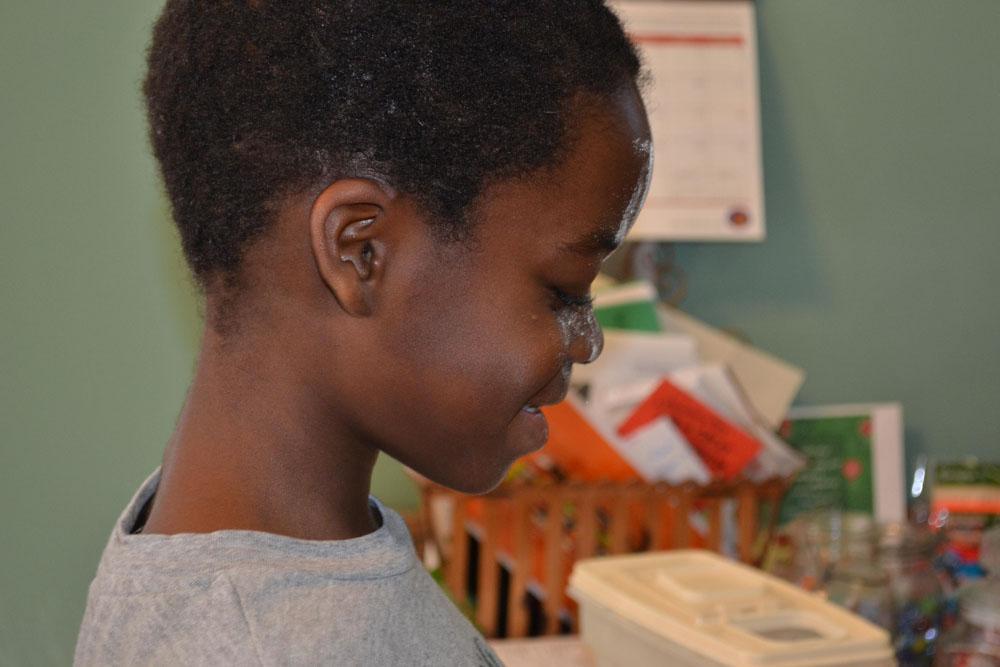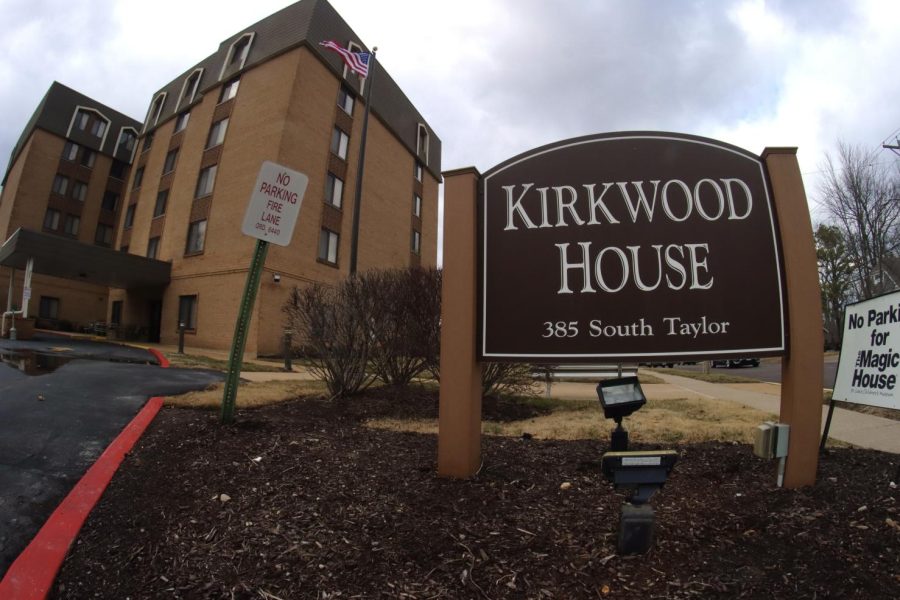The McGrath Family
Cathy McGrath was sitting in her KHS office, completely unprepared, when the social worker brought her very first foster child by so that she could say a final goodbye.
McGrath, senior principal, had previously informally fostered high school students who had issues at home and needed a temporary break, meaning that she was not yet a registered foster parent. However, she decided working with younger kids would have a greater impact. A little over two years ago, McGrath opened up her home as a refuge to take in children who needed a place to stay while their parents dealt with issues that pulled the children away from their home. But despite the hardships of caring for children who came from less-than-ideal situations, the truly difficult part came with each goodbye.
“I tried to help [the first foster boy] see that he was going back home,” McGrath said. “But he just kind of turned his head goodbye and tears were running down his cheeks.”
While she works, the three current children stay in a daycare center, and McGrath picks them up when school lets out. McGrath said her purpose is to give them a glimpse of hope and, as an administrator, see positive connections to education so they will have a greater likelihood of having success in life and school.
“It’s trying to make the kid feel safe and not completely disconnected when they come to live with you,” McGrath said. “I just try to keep those memories flowing.”
Bruce, 8, has lived with McGrath since he was 6. McGrath’s family also consists of two 5-year-old twins, William and Emerick. With the possiblity of adoption always at the back of her mind, McGrath is looking into the adoptive process to permanently bring one or all of the kids into her life. Though she was deeply invested in each child who came
to stay, McGrath admits adoption would not be something taken lightly, since not every child she had would be one she would consider adopting.
According to McGrath, the attachment formed between herself and the kids makes fostering difficult when the time comes for them to go back to their parents or a relative. Having grown so close to the kids she currently cares for, McGrath would no longer have to deal with the pain of saying goodbye to a child if an adoption is completed. She is currently waiting on a judicial decision regarding the termination of parental rights, then the case will have to go through an adoption committee to determine who the children would go to. If the potential adoption works out, McGrath would be finished fostering in order to fully care for the boys, since the attachment often becomes difficult to bear.
“The hardest part is the connection you make, the bond that you have and not knowing if they’re going to stay with you long term or if they’re going to leave,” McGrath said.
The Sly Family
Six years ago, an 8-year-old from Honduras had severe scoliosis. Four years ago, an 18-year-old from Honduras needed open heart surgery. Three years ago, an 8-year-old from Guatamala needed a leg amputation. Kelin, Leila and Orfa, all unable to get the care they needed in their home country, were welcomed into the Sly family with opened arms.
Mary Sly, Molly’s mom, was first introduced to the idea by her cousin, who runs the Missouri chapter of the organization World Pediatrics Project. The organization takes in kids from around the world who need life-altering surgery and gives them the care they could not get from their home country. The surgeries are usually so serious they have to stay in St. Louis for an extended period of time.
“People always say how nice it is that we help [the kids] but it is really a blessing for us,” Molly Sly, junior, said.
The first child the Sly’s volunteered to help was Kelin. Kelin’s lungs were being crushed due to fatal scoliosis, so she completed a two-year medical treatment stint in St., Louis. When she returned to Honduras her parents asked the Sly’s if she could attend school in St. Louis to receive a better education. Her family lives in the mountains of Honduras with no electricity or running water but work very hard in the coffee fields and are better off than many other families in Honduras. As a result Kelin lives with the Sly family during the school year and goes home in the summer which will continue until she graduates high school.
“Kelin has a very loving and selfless family and is a very loving child. Her family knows she has much better opportunities if she lives here,” Mary said.
Leila, who needed open heart surgery, was the next to come and stay.
“It was very different because she was so much older, but it was still great to have her with us,” Molly said.
A year later, Orfa came to get her leg amputated. She comes back to the Sly’s every year as she grows to get a new prosthesis.
The most recent additon to the Sly family was David, 19, also from Guatemala. David lived here for the summer but was just as special to the Sly’s. David lived with a clubbed foot his whole life and became the first adult to have a successful surgery that turned his whole foot around.
Although the kids adapted easily, all of the kids spoke Spanish when they came to America.
“They are amazingly smart kids and it was awesome how their young brains could learn English. They really understood and started speaking fluently in just months,” Mary, said.
Orfa attended St. Peter’s and Kelin will keep attending St. Peters until high school. Many St. Peter Parish Members have become close with the children.
“I knew Kelin the best because she has lived with them the longest. She is like a little sister to Molly. Orfa, Leila and David weren’t there as long, but I loved getting to know them,” Mary Hilleren, junior and friend of Molly said.
Helping the four kids get through life-changing surgeries was something the Sly family never thought twice about. Molly plans to participate in the World Pediatrics Project because she wants her kids to have the same experiences she had. The kids living with the Sly’s had a lasting impact on the family.
“It has been a great blessing truly for all of us. They have been so special and we have all become more loving and appreciative,” Mary said.
The Bell Family
The shrill ring of the telephone interrupts the silence in the Bell family house. As a registered foster family, a single phone call holds the power to
change their lives for the next several weeks or months. Elise Bell, freshman, and the rest of her family are used to having unfamiliar children enter into their lives while the foster care agency attempts to find them a permanent home.
Just months after Bell’s parents became registered in January 2011 through Good Shepherd Services, the long- awaited phone call finally came: there was a 3-year-old boy down at the hospital who needed somewhere to stay. Having just recovered from surgery following a gunshot wound to the head, the boy needed to relearn how to walk with the help of a miniature green walker.
“He would only eat hot dogs and Cheetos, and it was so cute because we saw him slowly get better while he stayed with us,” Bell said. “He stopped using his walker and leg brace and could walk on his own, and it was really cool to see all that happen.”
The decision to foster children was not easy, and Bell’s parents and family underwent three months of training classes, background checks, physicals, character references and home visits by the agency.
So far, Bell has hosted the young boy in need of rehabilitation, a group of three siblings and their two older brothers and a newborn baby that came into the world addicted to heroin as a result of her mother’s drug problem. With no warning as to when a child may come to stay, the Bells must be ready at any second.
“You have to be able to let go of complete control because you don’t know when [the agency] is going to call you and you don’t know when the child is going to leave,” DeAnn Bell, Elise’s mother, said.
The most hectic situation for the Bells came in October with the arrival of three siblings who had experienced a death in the home resulting from a heroin overdose. At ages 6, 7 and 8, not many foster families are able to take in multiple kids, yet people are reluctant to split apart siblings who have recently undergone extreme trauma. DeAnn, upon arriving to pick up the kids and seeing their two older siblings, ages 12 and 13, decided she would take all of them for the time being in order to keep them from being separated. The two oldest siblings were relocated within a week to another home.
Despite the struggles that may occur within a family, the goal of the foster care system is reunification. The initial aim is to get kids back with their parents, and if for some reason that cannot be done, the professionals look to place the children with other relatives. According to DeAnn, the difficulties of fostering kids lies with the emotional damage and abandonment issues that can occur from the act of tearing kids away from family, even if it is for their safety.
“Since they had so much trauma in their life some of them would throw temper tantrums and scream and kick,” Bell said. “But they were really sweet kids and they would treat me like their older sister.”
Bell’s parents plan to continue fostering children in their home, at least until Bell and her two younger brothers have moved out of the house. DeAnn said the conditions the kids come from provide the motivation, since some people cannot even imagine the hardships and situations the foster kids are put through on a daily basis.
“They didn’t ask for this stuff to go on in their lives and yet this is what they’ve been given,” DeAnn said. “Some kids are given so much, and it’s not that they don’t deserve it, but some other kids are given so little and they don’t deserve it either.”















